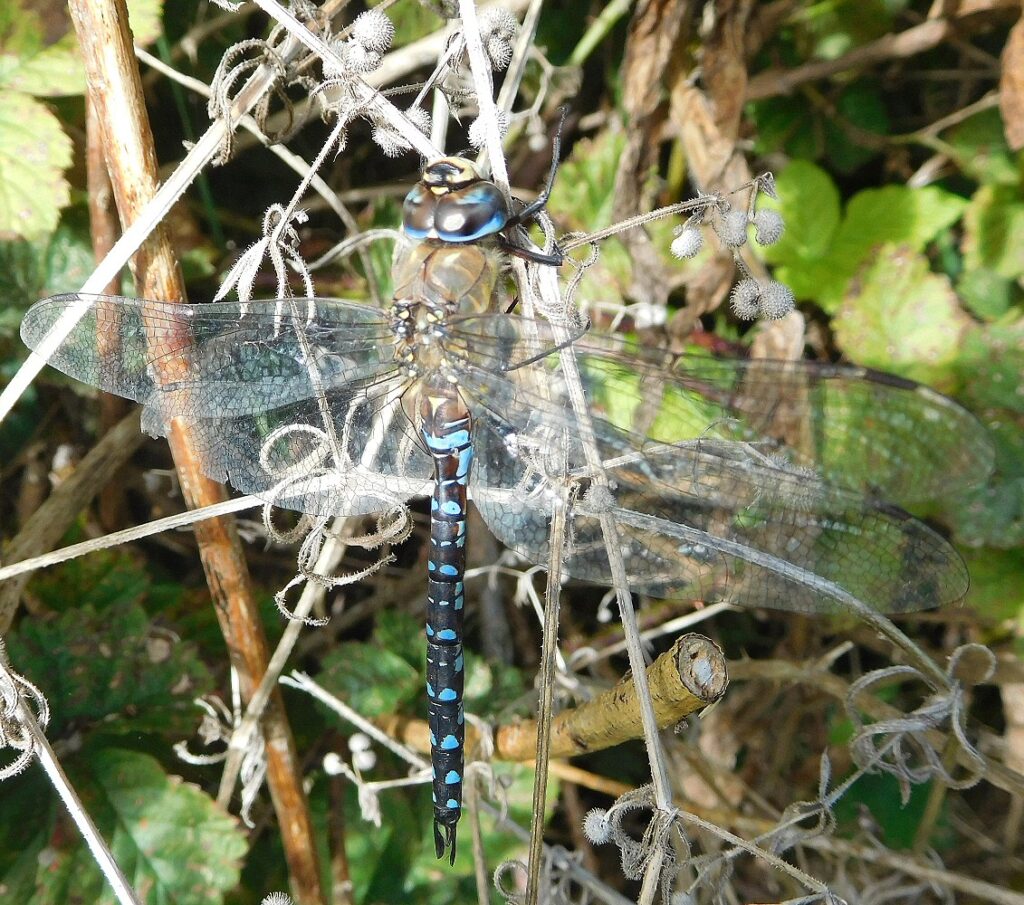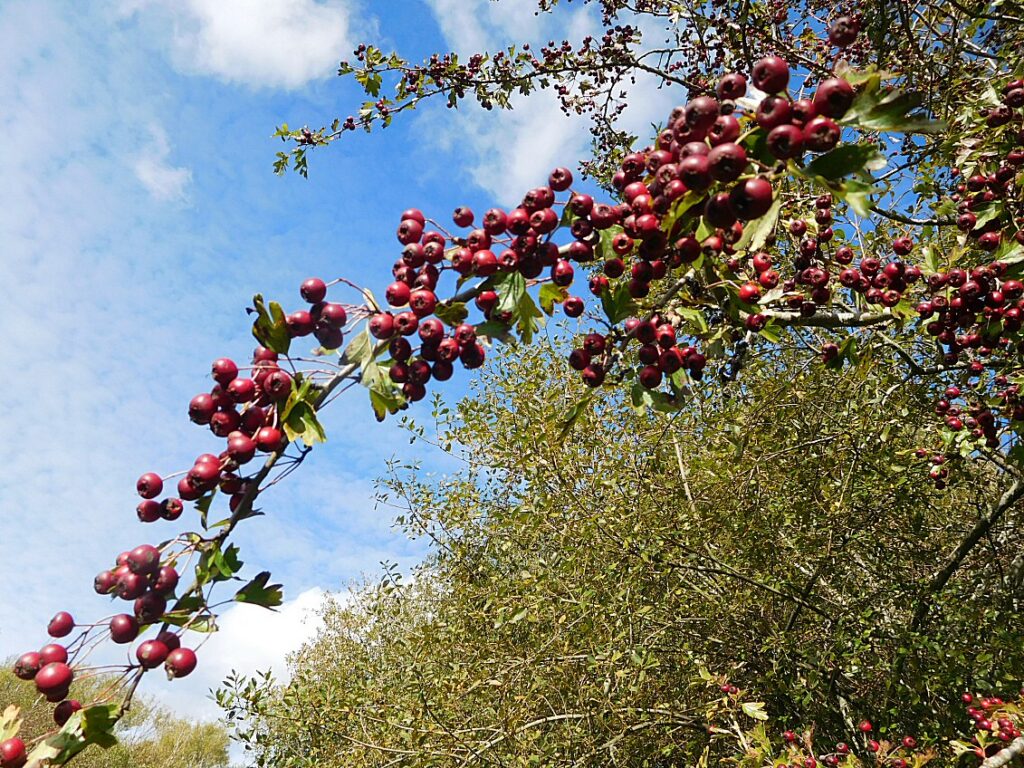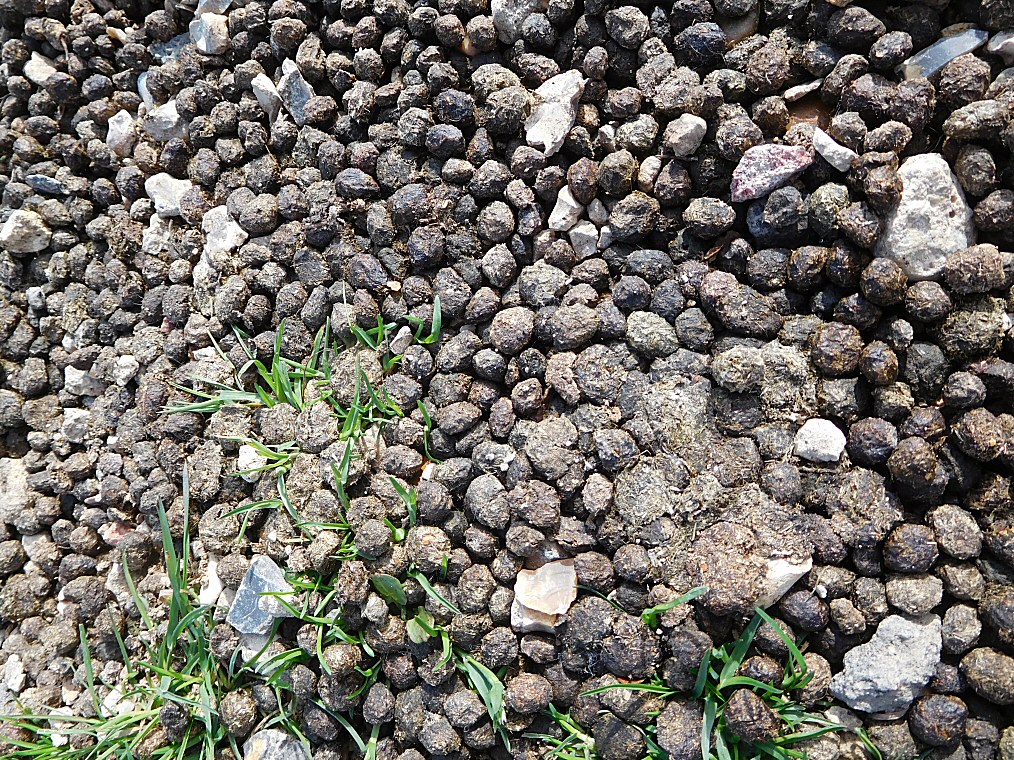A quiet sunny day in October – probably no migrants or winter ducks – perhaps it’ll just be a peaceful walk in the fresh air. Not a bad thing.

Among the brambles, a dragonfly flashed past; then another, patrolling up and down, inspecting a third one perched stock-still. They were small Hawkers, slim and with a lot of blue, and yes, they were definitely Migrant Hawkers, small Aeshnids that fly pretty late in the year. The patroller saw off a couple of bees or wasps: that’s quite aggressive, given that those insects can deliver a sting fatal to other insects.
Something hopping about in a Willow down by the water caught my eye, so I raised my binoculars, and was at once rewarded by an excellent view of a Chiffchaff, which helpfully called “Hweet” repeatedly to identify itself from the similar-looking Willow Warbler (not specially found in Willows), which says “Hoo-eeet” a bit more disyllabically. I had time to admire its bold eye-stripe before it disappeared into the foliage.
A few minutes further, a REALLY LOUD high-pitched chattering, — such a big sound that it hurt my ears. On a branch above the lake was silhouetted a small bird with a long heavy beak – it had to be a Kingfisher. At that moment, another Kingfisher flew up, hovered for a moment, chattering, and both birds raced off. Well!
Something heavy splashed into the water, leaving ripples. I peered through the branches. A Cormorant took off with noise and effort; another; and three more. A Little Egret joined them, white with short rounded wings and long conspicuous primary flight feathers spread out individually like fingers.

The path past the fishing lake was flooded after the recent storm, from its bone-dry state all summer.
The Hawthorns were glowing a rich red, heavy with berries. Soon the winter thrushes, Redwings and Fieldfares, will arrive and feast on them.

I looked down. In the middle of the track, an enormous latrine — for Rabbits. Hundreds of little round pellets of differing ages, some fresh, many dry and crumbly (I didn’t try to rub them) formed a miniature cobbled pavement. Did you know that Rabbits always used the same toilet? Now you do. Perhaps it help to avoid giving information to predators like the Red Fox about where the Rabbits are today, so the extra effort of, er, going to the toilet pays for itself in increased safety.
In the horse field, this year’s foals were still staying close by their mothers, who went on grazing unconcernedly; a foal eyed me nervously as I went by.
At the Solar Farm, a small tractor whirred up and down, cutting the grass. Seems a shame that they can’t follow the excellent lead of Thames Water, who use a flock of Sheep to keep the grass short around their reservoirs the other side of the railway line. Still, it’s clean green energy, for the most part.
Just a quiet autumn walk on a sunny day. Nothing remarkable to report.
